Extended Stay Hotels: The Complete Guide for Modern Hoteliers
Nov 6, 2025
 Mika Takahashi
Mika TakahashiPopular Categories
Hotel Technology & InnovationHotel Operations OptimizationDigital MarketingIndustry TrendsRevenue ManagementHospitality Industry
Popular Categories
Trending Post

Hotel Walk Letter Template: Professional Guest Communication
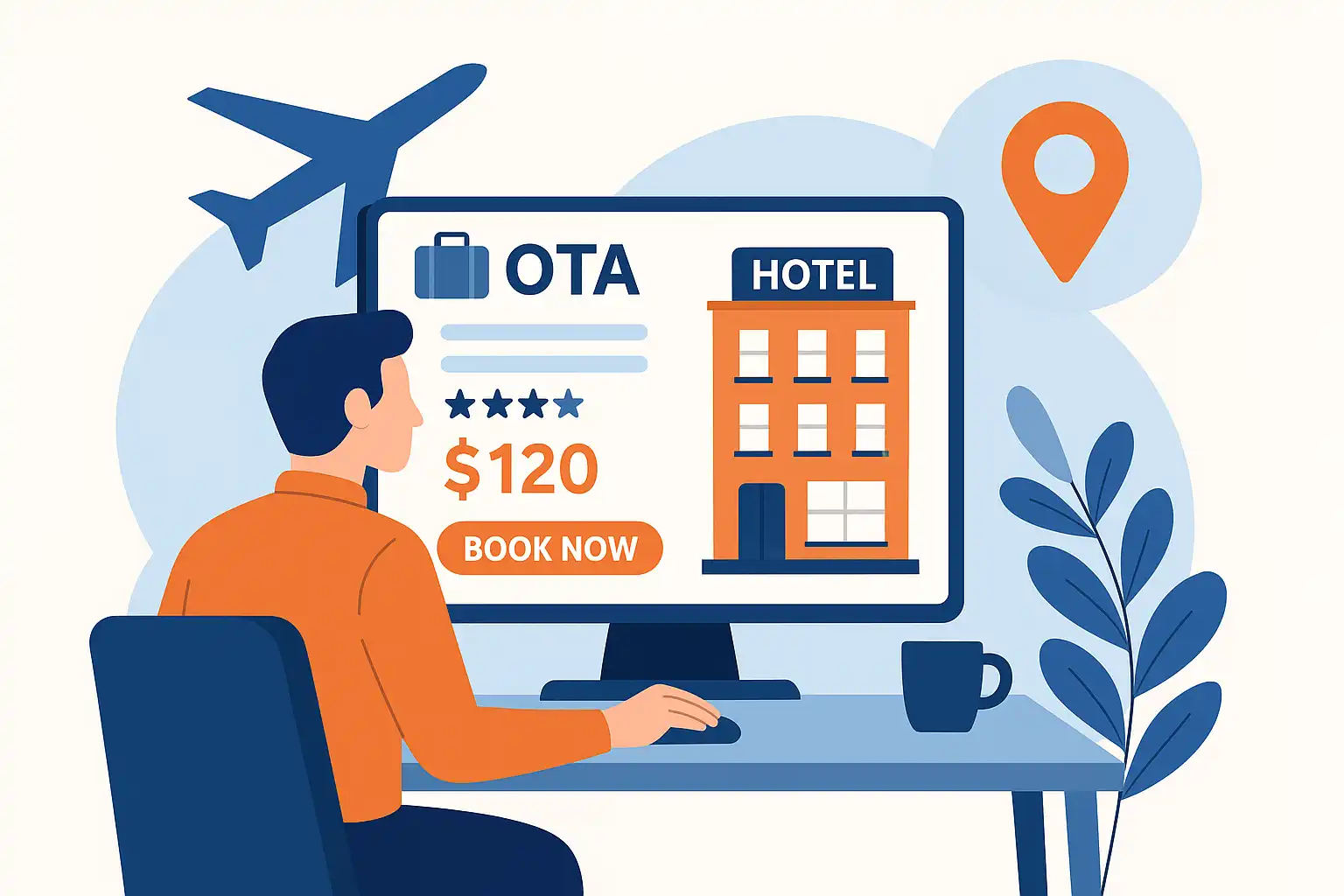
Online Travel Agents: What They Are and How They Work
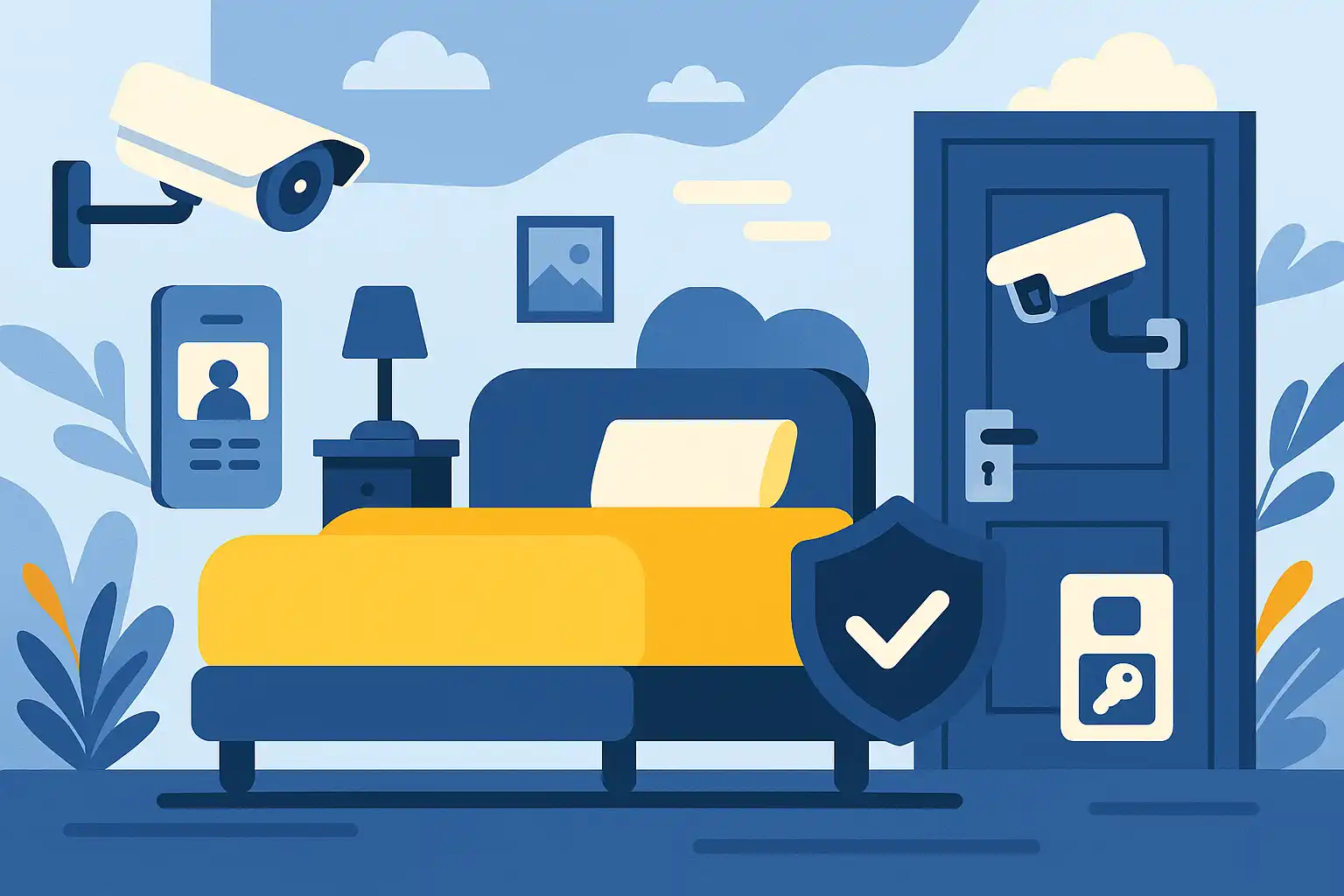
Hotel Security Systems: Modern Protection Solutions

Hotel Advertising: Complete Guide to Boost Bookings and Revenue
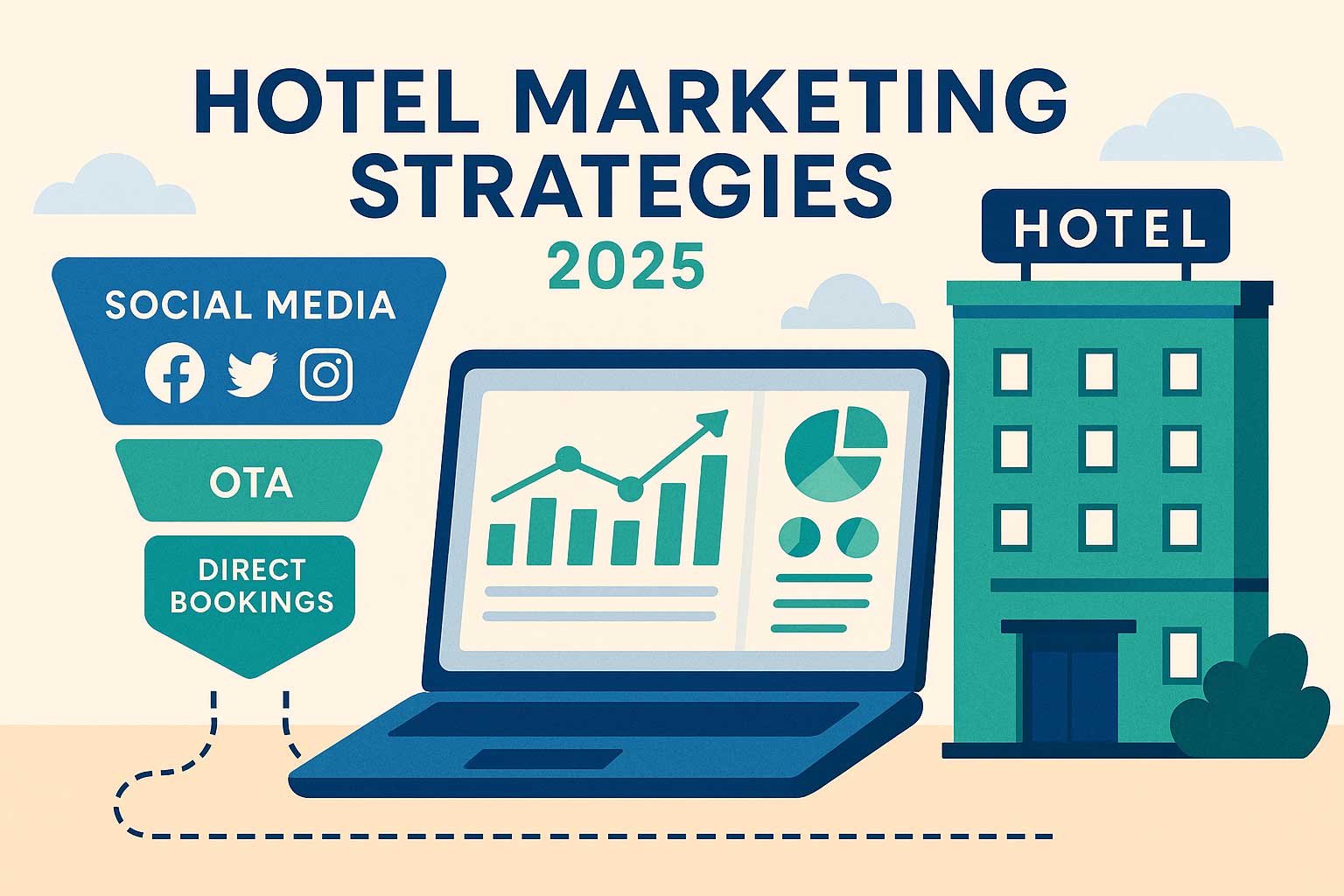
25 Hotel Marketing Strategy Ideas for 2025: Complete Guide

AI Reservation Agent: Revolutionizing Hotel Booking and Guest Experience

PMS Communication: Streamlining Property Management Through Effective Guest Messaging
Table of contents
The extended stay hotel market is one of the most resilient and profitable sectors in hospitality today, catering to over 500 million business trips annually that require accommodations for seven days or more. While traditional hotels often compete on nightly rates and prime locations, extended stay hotels thrive by building lasting relationships with guests through apartment-style amenities and a home-like atmosphere that justifies premium pricing.
For hoteliers, this segment offers some clear advantages: steady, predictable revenue, lower operational costs, and strong demand from a growing mobile workforce. Whether you’re thinking about converting existing properties or launching new extended stay hotels, understanding this specialized market can open up exciting growth opportunities for your business.
In this complete guide, we’ll explore every facet of extended stay hotel operations—from maximizing revenue and understanding guest demographics to tackling operational challenges and tracking key performance metrics. You’ll see why more and more hotel operators are focusing on this segment and how you can make the most of its unique benefits.
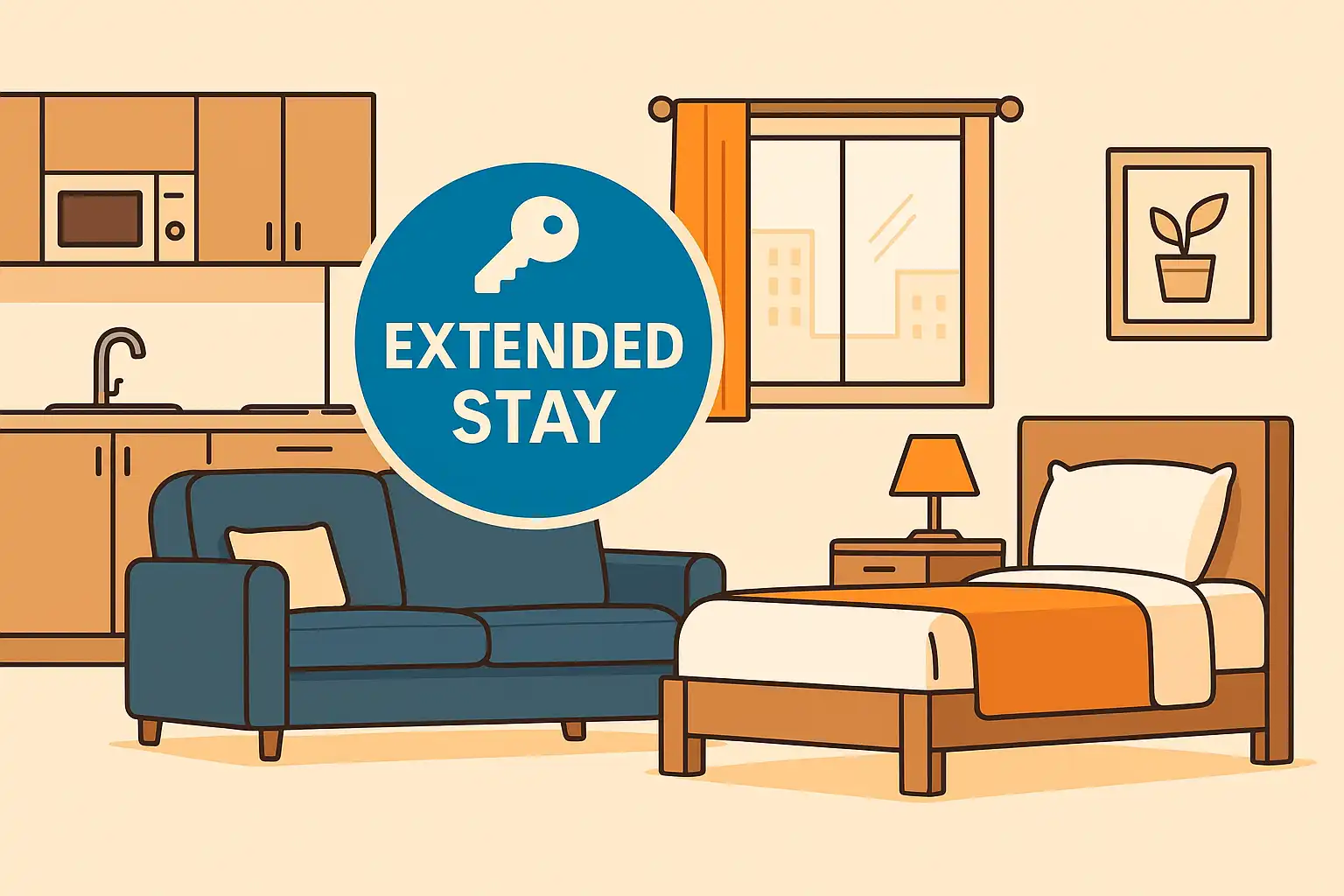
What Are Extended Stay Hotels and Why They Matter for Your Business
Extended stay hotels are designed specifically for guests planning to stay a week or longer. These properties feature apartment-style suites equipped with fully furnished rooms, including full kitchens, separate living spaces, and residential-style amenities. Unlike traditional hotels geared toward short-term visitors, extended stay hotels cater to travelers who need temporary housing for longer periods—whether for work projects, medical treatments, or family transitions.
The market demand speaks volumes. With over 500 million business trips each year requiring extended accommodations, the need far outpaces supply in many areas. Extended stay guests are a distinct group who prioritize value, convenience, and the comforts of home during their travels.
What sets these hotels apart? Fully equipped kitchens with full-size appliances, spacious suites averaging 400-600 square feet (compared to about 300 square feet in a standard hotel room), and weekly or monthly rate structures that offer significant savings for longer stays. Plus, amenities like on-site laundry, conference rooms, fitness centers, and pet-friendly policies that you don’t always find in traditional hotels.
Several trends are driving this growth. The rise of remote work means more professionals can stay in extended stay hotels for weeks or months while working. Medical travelers seek affordable alternatives near treatment centers. Corporate relocations and temporary assignments keep demand steady from business travelers needing furnished accommodations while they transition.
Compared to traditional hotels, extended stay properties enjoy more predictable revenue thanks to longer booking windows and less seasonal volatility. Unlike short-term rentals, they provide professional management, consistent service standards, and the operational efficiencies that come with hospitality expertise.
Revenue Benefits of Operating Extended Stay Properties
Extended stay hotels offer a reliable and steady income stream that’s hard for traditional hotels to match. Monthly stays typically bring in $1,000 to $4,000 per unit, providing cash flow stability that boosts property values and investor confidence.
Looking at average daily rates and length of stay, the advantages become clear. A traditional hotel might charge $150 per night for a standard hotel room, but extended stay hotels can offer effective daily rates of $100 to $150 for monthly guests—while delivering higher satisfaction and guest loyalty. Guests staying five to seven days or more especially appreciate this value, as it often beats the cost of separate housing plus dining out.
Many extended stay hotels use all-inclusive pricing models that bundle utilities, Wi-Fi, parking, and sometimes housekeeping into monthly rates. This simplifies budgeting for guests and captures revenue that might otherwise be lost to third-party providers. Spacious suites with home-like amenities justify premium pricing and enhance guest comfort.
Seasonal fluctuations are less of a concern here. Business travelers, medical patients, and relocating families generate steady demand year-round, smoothing out the peaks and valleys that can challenge traditional hotels. Weekends often see higher occupancy as guests use their extended stay as a home base for leisure activities.
Distribution costs are also lower because extended stay guests tend to book directly with the property after researching their options, reducing costly OTA commissions. Plus, word-of-mouth referrals from happy long-term guests bring in new business organically.
Ancillary hotel revenue streams include on-site laundry, grocery delivery partnerships, conference room rentals, and extended parking. Some hotels even partner with local restaurants, fitness centers, and business services to offer extra perks to their extended stay guests.
Operational Advantages for Hotel Management
Managing extended stay hotels brings operational efficiencies that boost profitability. For starters, turnover costs are much lower since there are fewer check-ins and check-outs. A guest staying for 30 days requires far less housekeeping and front desk attention than 30 different nightly guests.
Housekeeping schedules become more predictable and efficient. Most extended stay guests receive weekly cleaning, allowing staff to plan better and reduce labor costs. Many hotels offer flexible housekeeping options so guests can choose the frequency that suits their needs and budget.
Marketing expenses drop once a property builds a strong local reputation. Extended stay guests rely heavily on word-of-mouth and direct bookings. Corporate clients often develop ongoing partnerships that generate steady bookings without the need for heavy advertising. Repeat guests become a key revenue source as business travelers return for new assignments.
Occupancy rates tend to be more stable through economic ups and downs. For example, during the COVID-19 pandemic, extended stay hotels maintained occupancy rates above 70%, while the broader hotel industry averaged around 40%. Projects related to business continuity, healthcare, and housing displacement keep demand consistent even in tough times.
Staff efficiency improves due to predictable schedules and less daily turnover stress. Front desk teams can focus on building guest relationships instead of processing constant arrivals and departures. Maintenance can plan routine work around guests’ routines, improving service quality and efficiency.
Inventory management is simpler with longer booking windows that improve demand forecasting. Properties can optimize staffing, negotiate better supplier deals, and reduce waste through smarter planning. Revenue management systems can focus on longer-term pricing strategies instead of daily rate swings.
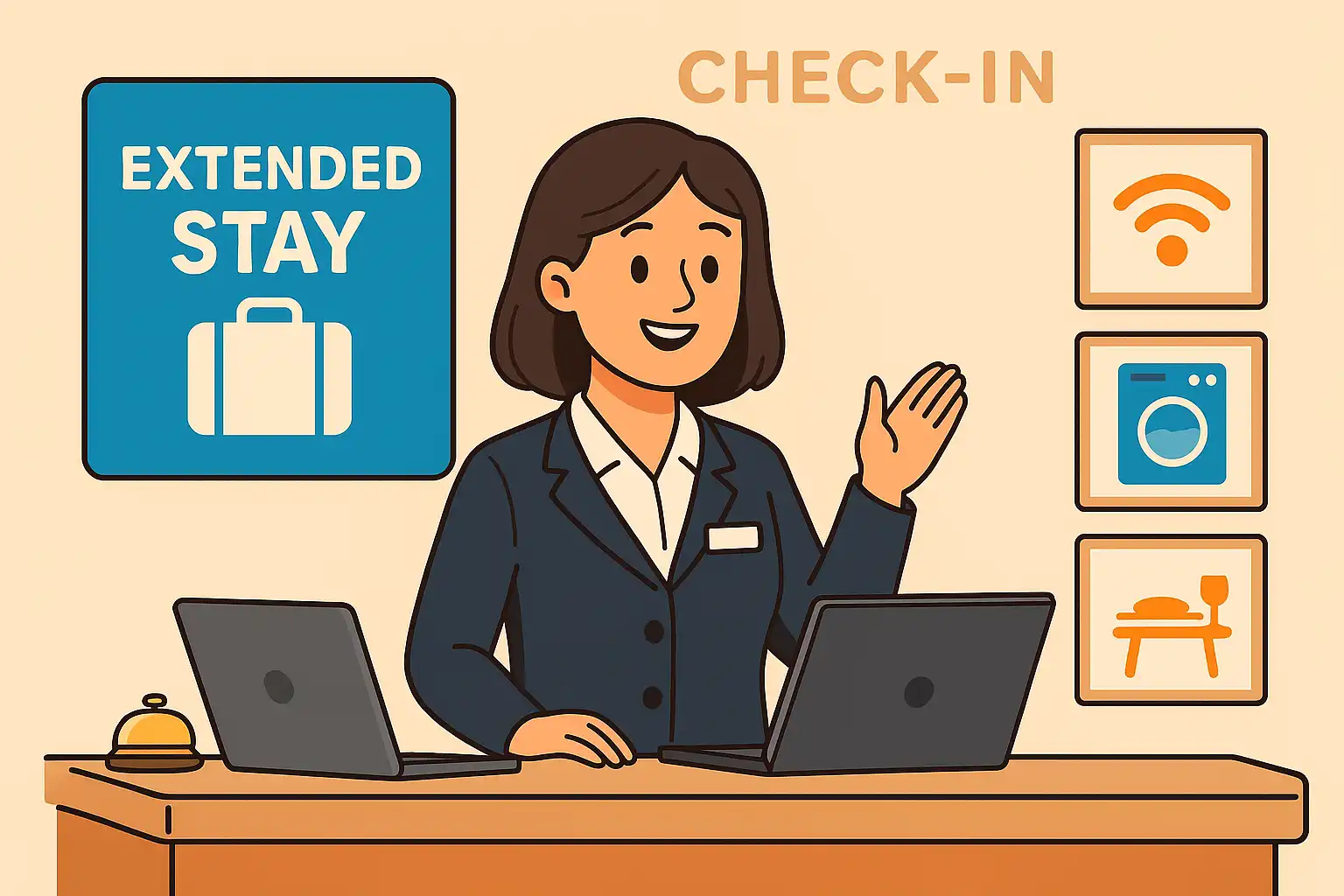
Target Guest Demographics for Extended Stay Hotels
Business travelers make up 30-40% of extended stay guests and are among the most reliable and profitable groups. These include consultants on long projects, executives on temporary assignments, and professionals training at corporate sites. They usually stay between 2 and 12 weeks and look for amenities like business centers, dependable Wi-Fi, and proximity to business districts.
Relocating professionals and families use extended stay hotels as temporary housing during job changes, home purchases, or transfers. They often book stays from 1 to 6 months and value spacious suites, family-friendly amenities, and locations near schools or workplaces. They appreciate the cost-effective alternative to traditional hotels while searching for permanent housing.
Medical travelers are a growing segment, including patients undergoing treatment, families supporting loved ones in hospitals, and medical staff on temporary assignments. They prioritize accommodations near healthcare facilities and supportive environments during stressful times. Typical stays range from 2 to 8 weeks depending on treatment.
Insurance-displaced guests provide steady demand, especially after natural disasters or home emergencies. Insurance companies often negotiate corporate rates for displaced policyholders, creating reliable bookings. These guests may stay for weeks or months while their homes are repaired.
Digital nomads and remote workers increasingly prefer extended stay accommodations for their flexibility and value. They seek reliable internet, workspace areas, and locations that balance business infrastructure with leisure options. Many extend their stays based on work projects or personal preferences.
Government contractors and military personnel create consistent demand near federal offices, military bases, or infrastructure projects. These bookings often involve negotiated government rates and provide predictable, long-term occupancy.
International visitors on extended visas—business professionals, students, and temporary workers—are an underserved market. They may stay for months while settling in and appreciate properties that understand their unique needs.
Essential Amenities and Property Features
Fully furnished rooms with fully equipped kitchens or kitchenettes are the hallmark of extended stay hotels. Guests expect full-size refrigerators, stovetops or cooktops, microwaves, dishwashers, and all the cookware and dinnerware needed to prepare their own meals. This ability to cook reduces expenses and boosts comfort during longer stays.
Separate living and sleeping areas create the home-like atmosphere that extended stay guests crave. Spacious suites offer distinct zones for work, relaxation, and sleep, helping guests maintain their routines. Living areas include comfortable seating, dining tables, and good lighting for both business and leisure.
Ample storage space is essential for guests staying weeks or months. Multiple closets, drawers, and shelves accommodate wardrobes and personal belongings. In-room safes, extra electrical outlets, and USB charging stations support modern travelers’ tech needs.
On-site laundry facilities are a must. Whether self-service coin-operated machines or complimentary washers and dryers, guests need easy access to laundry. Some hotels offer valet laundry as a premium service for busy guests.
Business centers and conference rooms cater to professional guests needing meeting spaces, printing, and reliable internet. These spaces can also generate extra revenue by serving local businesses and hosting guest meetings.
Fitness centers, pools, and recreational facilities boost guest satisfaction and help guests maintain healthy routines during longer stays. Pet-friendly policies and amenities, like dog runs and cleaning stations, appeal to guests relocating with their furry friends.
Free parking and Wi-Fi have become expected amenities rather than luxuries. Extended stay guests often travel with vehicles and rely on steady internet for work and personal communication. Properties charging for these basics risk losing competitiveness.
Vending machines and small convenience stores provide essentials so guests don’t have to leave the property for basic needs. Some hotels partner with grocery delivery services or stock guest pantries with cooking supplies and snacks.
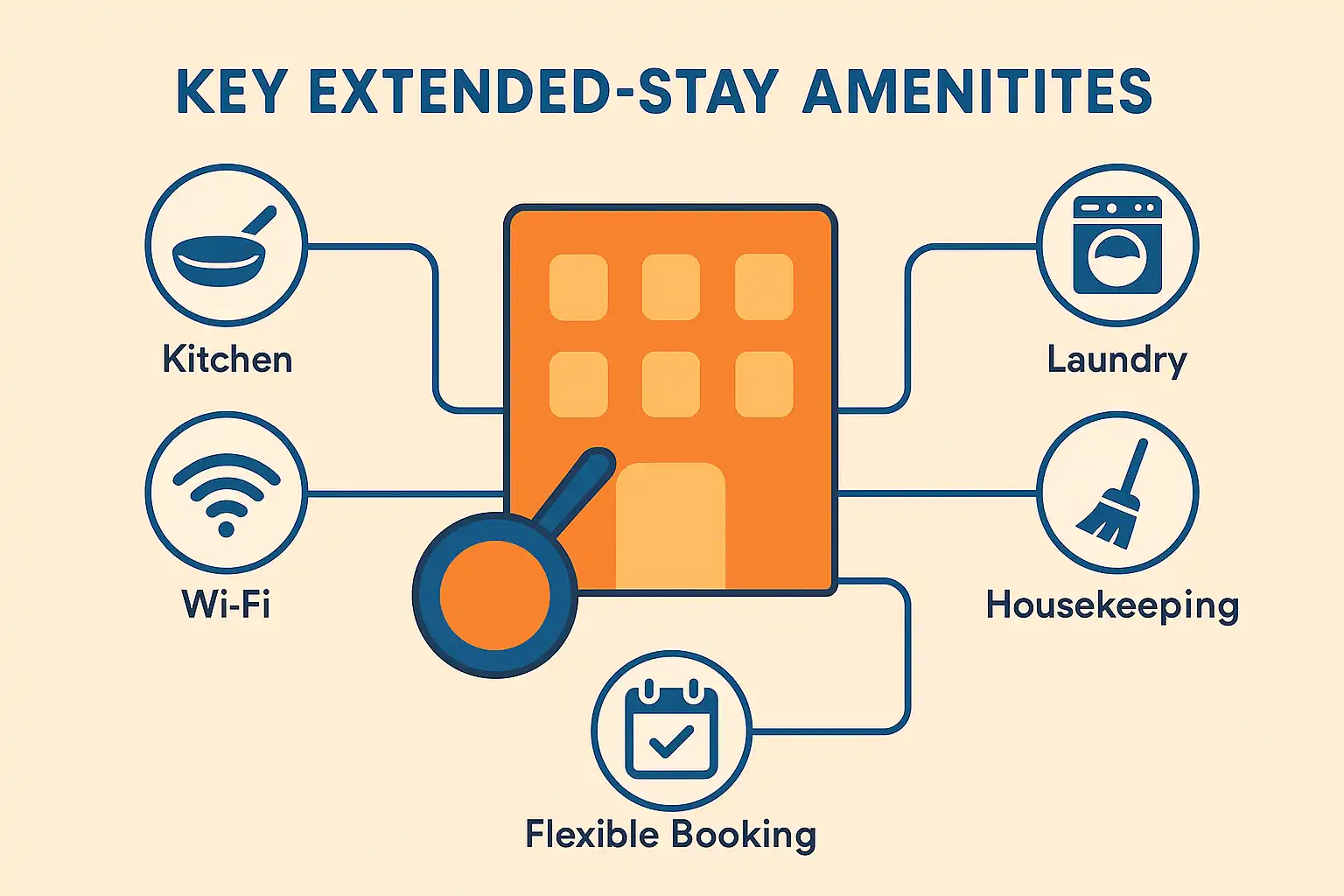
Pricing Strategies and Rate Management
Weekly discount tiers create attractive value for guests considering longer stays. Most properties offer 10-15% off for stays of seven days or more, with bigger savings for longer commitments. This encourages guests to book longer stays upfront rather than daily.
Monthly rates offer the deepest discounts, typically 25-30% below equivalent nightly rates for stays of 30 days or longer. These rates reflect reduced housekeeping, lower turnover costs, and guaranteed occupancy. Properties can offer all-inclusive packages or itemize services to suit different budgets.
Corporate rate programs serve business clients booking multiple rooms or generating steady demand. These negotiated rates usually fall between weekly and monthly pricing and often include perks like expedited check-in, dedicated parking, or meeting room access.
All-inclusive pricing simplifies decisions and captures extra revenue. Bundling utilities, Wi-Fi, parking, and basic housekeeping into one rate eliminates surprises and appeals to corporate travelers managing budgets. It also reduces administrative work for guests and staff.
Flexible payment terms cater to different guest needs. Weekly billing suits business travelers managing expense reports, while monthly billing works for individuals and families budgeting personally. Some properties offer payment plans for guests facing extended stays due to emergencies or medical needs.
Seasonal pricing remains important but with smaller swings than traditional hotels. Summer may see more family relocations; winter may bring more medical travelers avoiding cold climates. Understanding local patterns helps optimize pricing year-round.
Market-based pricing requires regular checks of competitor rates, apartment rental costs, and corporate housing options. Extended stay hotels compete not just with other hotels but also furnished apartments and short-term rentals, so keeping an eye on the market is essential.
Converting Short-Stay Guests to Extended Stays
Reaching out to guests during their initial stay can turn short visits into longer bookings. Front desk teams should monitor check-out dates and start conversations about extensions 3-5 days before departure. Understanding why guests are traveling helps identify opportunities.
Incentives for extending stays should offer real value while keeping profitability. Common tactics include increasing discounts for longer stays, free additional housekeeping or parking, or upgrades to larger suites. The goal is to show clear benefits compared to rebooking or moving elsewhere.
Partnering with local businesses adds value for long-term guests. Discounts at nearby restaurants, gyms, shops, and entertainment venues make extended stays more attractive and can generate referral income for the hotel.
Personalized service builds loyalty. Staff should learn guest preferences, remember names, and recommend local services and attractions. Small touches like greeting returning guests by name or offering preferred rooms create emotional connections that encourage longer stays.
Flexible check-out policies help accommodate changing plans. Offering late check-out, early check-in, or holding rooms for same-day extensions reduces friction for guests whose schedules shift. Some hotels keep a small inventory of rooms for extension opportunities.
Offering room upgrades to extended-stay suites to guests who initially booked standard rooms can showcase the benefits of the larger spaces and extra amenities, encouraging longer bookings.
Property Design and Layout Considerations
Larger room sizes are key to extended stay success. Suites typically range from 400-600 square feet, compared to about 300 square feet for standard hotel rooms. The extra space allows for separate living areas, full kitchens, and storage needs of long-term guests. Designs should feel residential rather than institutional.
Kitchen areas require careful planning to maximize function within suite footprints. Full-size appliances, ample counter space, and storage for cookware and groceries are essential. Proper ventilation, electrical capacity, and layouts that support actual cooking—not just reheating—are important.
Living room furniture should balance comfort and durability. Residential-style sofas, coffee tables, dining sets, and desks create inviting spaces. Furniture must withstand heavy use while maintaining a fresh look between deep cleanings.
Storage solutions address practical needs. Multiple closets, drawers, and shelves help guests organize wardrobes and belongings. Hallway storage for luggage and seasonal items keeps suites tidy.
Lighting and décor should create a welcoming environment that sets extended stay hotels apart from typical hotels. Table and floor lamps, ambient lighting, and tasteful artwork help guests feel at home. Window treatments and color schemes should emphasize comfort and style.
Soundproofing is critical for guest comfort during long stays. Enhanced insulation between rooms, quiet HVAC systems, and noise control in common areas help maintain a peaceful atmosphere. Building materials and construction techniques should prioritize acoustic comfort.
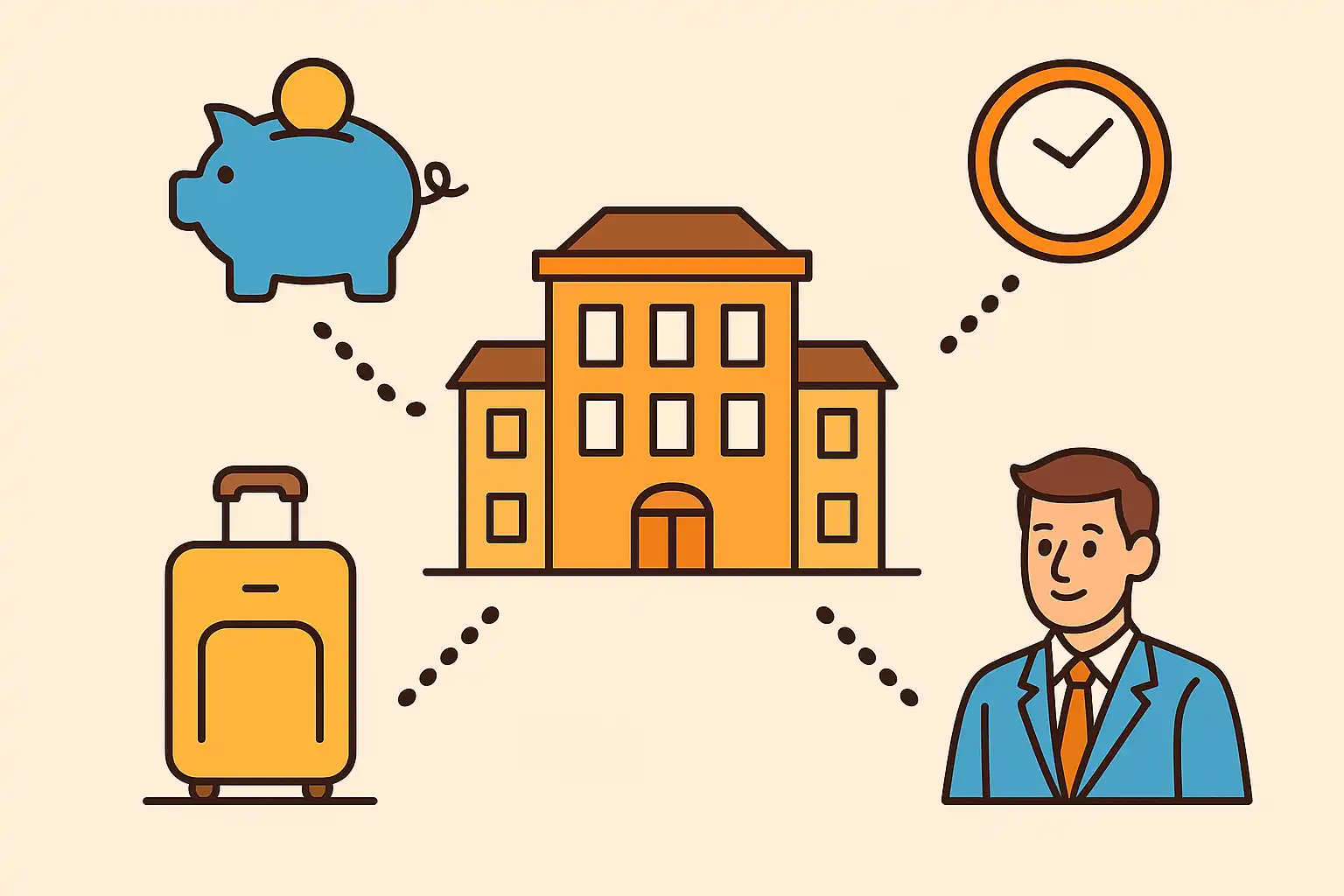
Marketing and Distribution Strategies
Corporate sales teams should focus on building B2B relationships with companies that relocate employees or manage long-term projects. Healthcare providers, consulting firms, construction companies, and tech organizations are prime targets. Understanding corporate travel policies and expense management is key.
Healthcare partnerships offer reliable referrals and position properties as preferred accommodations for medical travelers. Relationships with hospitals and specialty clinics generate steady bookings and often include negotiated rates and streamlined billing.
Government contracts provide stable income through GSA rates for federal employees and agreements with state and local agencies. Military bases and government contractors create consistent demand near their facilities.
Online presence is crucial. Properties should optimize websites for “extended stay” keywords and local searches. Keeping Google My Business listings current and creating content tailored to long-term travelers improves visibility.
Social media is a great way to showcase home-like amenities and guest stories that set extended stay hotels apart. Highlighting kitchens, living spaces, and testimonials builds trust. User-generated content from satisfied guests adds authenticity.
Referral programs reward current guests for recommending the property to colleagues, friends, and family. Extended stay guests often form strong bonds with staff and become enthusiastic advocates. Rewards can include discounts, gift cards, or special amenities.
Operational Challenges and Solutions
Housekeeping schedules need careful management to balance guest preferences and efficiency. Some guests want weekly service; others prefer more frequent cleaning. Clear policies and flexibility are important. Staff training should focus on residential-style cleaning techniques that differ from traditional hotels.
Maintenance demands increase with longer stays. Appliances, plumbing, and HVAC see more use and require proactive upkeep. Budgeting for wear and tear and preventive maintenance helps avoid guest disruptions.
Guest relations can be more complex due to longer, closer interactions. Small issues that might be overlooked in short stays become bigger over time. Staff training in communication, problem-solving, and relationship-building is essential.
Legal compliance varies by location. Some areas limit continuous stays to under 30 days to avoid classifying properties as apartments. Hoteliers must understand zoning, tax, and licensing requirements for extended stays.
Technology needs differ from traditional hotels. Property management systems should handle monthly billing, flexible housekeeping, and long-term guest profiles. Robust internet and in-room entertainment systems are increasingly important.
Staff training should emphasize the residential-style hospitality extended stay guests expect. Building community atmosphere and personalized service is key to success.
Financial Performance Metrics
RevPAR optimization balances occupancy and daily rates over longer periods. Extended stay hotels may have lower nightly RevPAR than luxury hotels but achieve higher monthly RevPAR through sustained occupancy. Tracking both daily and monthly RevPAR gives a full picture.
Length of stay tracking reveals patterns in guest behavior and revenue opportunities. Monitoring average stay by segment, season, and extension drivers helps optimize operations and marketing.
Guest lifetime value is especially important for extended stay properties, where guests often return or refer others. Tracking repeat business and total spend over time provides better insight than single-stay metrics.
Cost per occupied room should include utilities and extended services. Extended stay guests consume more utilities and use amenities differently than short-term guests. Accurate cost tracking helps with pricing and service decisions.
Conversion rates from short to extended stays show how well properties capture longer bookings from initial guests. Tracking extension rates and revenue impact helps evaluate sales and guest satisfaction.
Seasonal analysis identifies peak extended stay periods and informs pricing strategies. Unlike traditional hotels, extended stay demand may follow local business cycles, medical schedules, or relocation trends. Understanding these helps with planning.
Conclusion
Extended stay hotels offer one of the most promising growth opportunities in hospitality. They provide predictable revenue, operational efficiencies, and strong demand from a mobile workforce. Their resilience during economic challenges, combined with growing interest from remote workers, relocating professionals, and medical travelers, makes them a smart investment.
Success in this segment means understanding the unique needs of extended stay guests, investing in the right amenities and property features, and developing operations that support long-term relationships rather than short visits. Properties that get this right enjoy stable occupancy, premium pricing, and loyal guests who generate steady referrals.
Financial benefits go beyond immediate revenue to include lower marketing costs, improved cash flow, and competitive advantages in tough markets. As business and leisure travel continue to blur, extended stay hotels are well positioned to capture market share from traditional hotels and alternative accommodations.
For hoteliers exploring this segment, thorough market research, smart property positioning, and a commitment to residential-style hospitality are key. Investing in larger suites, enhanced amenities, and specialized service creates a strong market position and sustainable returns.
Whether you’re converting existing hotels or developing new extended stay properties, knowing this market’s dynamics and guest expectations will help you build a profitable, community-serving business that outperforms traditional hotel models.
